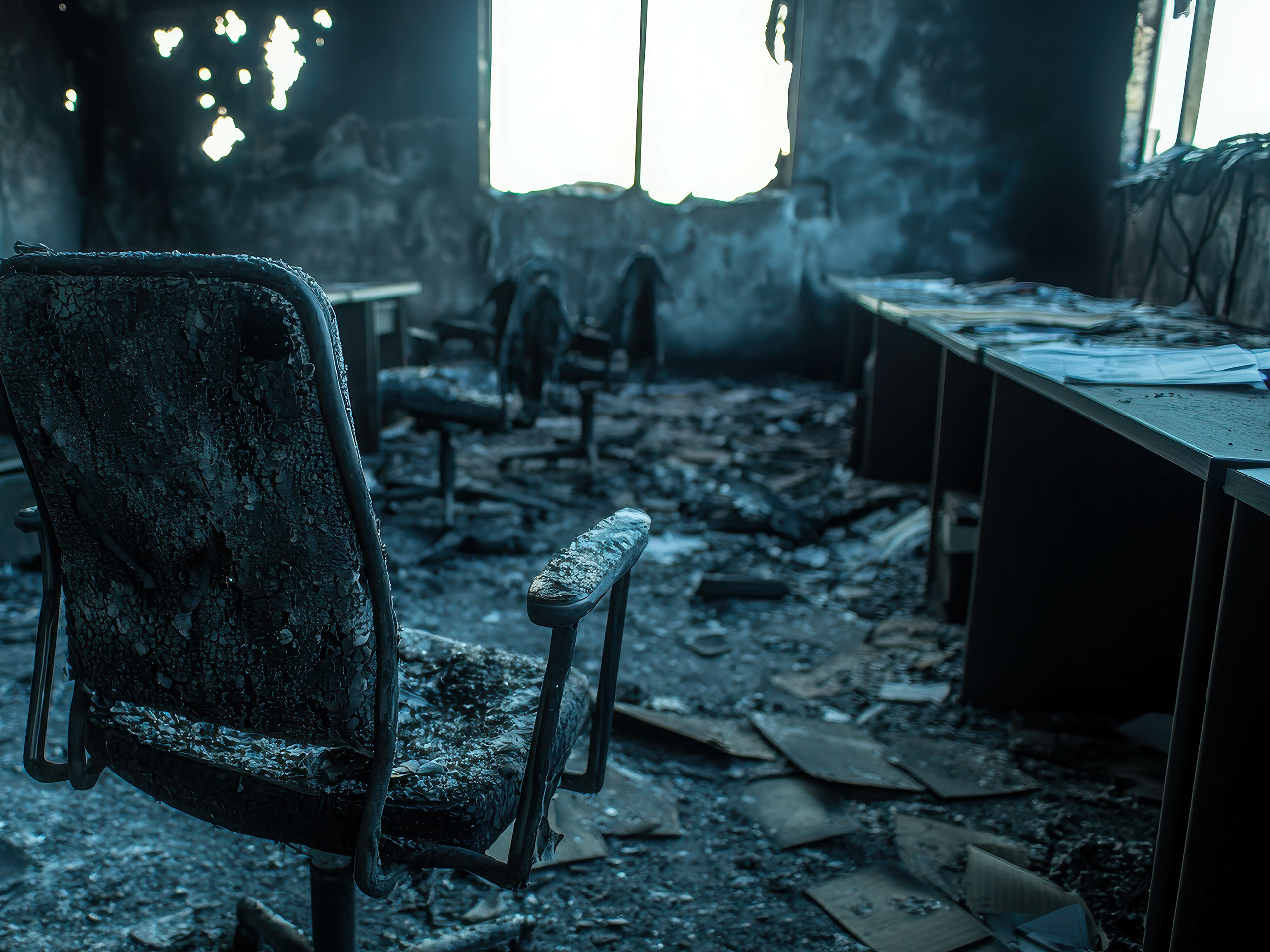The CEO startled out of a sound sleep to the trilling of his phone. Answering blearily, he heard words that strike fear in every business owner: there has been a fire. “Tens of thousands of companies are damaged by fire annually,” says John Gugliotta, President, Paul Davis Restoration of Boston South, Boston Metro West, and Rhode Island, Massachusetts. “To have the best chance of surviving the disaster, your corporate response must start right away.”
If a fire breaks out at your company on a weekend, holiday or ordinary workday, how will you respond? Paul Davis Restoration has developed a helpful roadmap to guide smart actions if a shocking and disorienting blaze occurs:
Step 1: Protect people first. Immediately evacuate the premises. Activate the fire alarm if a system is in place at your facility.
Step 2: Call 911 to report the fire. If fire extinguishers are within reach and can be safely deployed, do so as you await help. If extinguishers are not immediately effective, cease fire fighting activities and evacuate to a safe location.
Step 3: Stand by to assist emergency response personnel. Answer questions, notify responders of key assets, facility layout and onsite hazards that they may encounter during their response. **If you have an emergency response plan, activate it now and follow its instructions from this point.**
Step 4: Alert key personnel. Call your insurance carrier to report the fire. Convene your management team to plan next steps, assign communications responsibilities and coordinate immediate needs.
Step 5: Choose a mitigation and restoration company. Many insurance carriers maintain lists of trusted restoration firms; savvy companies form a relationship with their chosen restoration partner before disaster strikes. Reputable restoration partners will rapidly provide on-site inspections and presence; license verification and proof of liability insurance, third-party ratings and recent references; written cleanup and remediation plans and schedules; and payment processing arrangements. They will never arrive without invitation. They will allow you time to decide, without pressuring for commitment or payment.
Step 6: Document fire damage. If you can safely do so after flames are quenched, capture date-stamped pictures and videos of the damage. Do not enter or approach affected areas, which may be dangerous. Your chosen restoration partner may spearhead this step.
Step 7: Secure the site. Board up damaged areas to prevent unauthorized access, theft and vandalism. Your chosen restoration partner leads this step.
Step 8: Prevent secondary damage. Most insurance companies require that you take reasonable actions to protect against further damage such as weather exposure and mold growth, which could begin in as little as 24 to 48 hours in warm, humid conditions. Your chosen restoration partner leads this step.
“Finally, initiate continuity planning to maintain mission-critical activities, affirm business relationships and protect your company’s future,” Gugliotta says. “But here’s something you can do right now to guard against future disasters: create an emergency response plan.
“Don’t wait until a disaster happens, do this now: create an emergency response plan,” Gugliotta advises. “No company expects a fire, but every company can respond faster and be more organized if a blaze occurs. Call us at 844-215-7898 for free help creating an emergency response plan for your company. When things go wrong, we do what’s right.”











